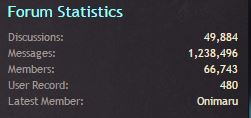After reading Bavelier’s article, “Brain Plasticity Through
the Life Span: Learning to Learn and Action Video Games,” in this past cycle’s
reading lineup, I became intrigued on the concept of learning to learn.
Bavelier sums up the main issue surrounding learning in his own words:
“The
ability of the human brain to learn is exceptional. Yet, learning is typically
quite specific to the exact task used during training, a limiting factor for
practical applications such as rehabilitation, workforce training, or
education.”
His words immediately caught my attention as someone who
highly involved in workforce training in my profession. I see this all the
time. I try to teach an employee a simple task to perform in the software yet
whenever some unforeseen variable comes along they are immediately thrown off
track – because that variable wasn’t in the original training. In fact, I’m
ashamed to admit, I often tease that such employees have maxed out their
intellectual hard drives and are unable to learn anything new. Thanks to
Bavelier, my narrow-minded thinking has been put right in front of me. For this
reason, I wanted to drill down on the concept of learning to learn and found,
among many articles, a piece by Rob McCormack, Geri Pancini, and Dan Tout of
Victoria University in Australia titled, “Learningful work: Learning to work
and learning to learn”.
In this article, the authors posit that the meaning of the
term “learning” must undergo some fundamental transformations due emerging
technologies, organizational structures, and new demands on skills and
knowledge. They call this becoming liquid or adaptable. The study focuses on
learning in the workplace. However, instead of education preparing one for
work, they focus on how the work-place becomes a place for education or
learning to learn.
Although these authors examine the workplace, I believe this
study mirrors the world of games and learning. I personally believe that games
and play are a simulation of real life. We, as students, can study theoretical
knowledge on a given topic but there is nothing experiencing the real thing.
Learning on the job can be very similar to jumping into a game. In fact, the
game I wrote about for my play journal this week did exactly that – I was
plunged into action with little to know explanation or orientation.
It is true, in the workplace, we often train people to
perform specific tasks. This could be similar to teaching someone a specific
position on a football team. If something occurs outside of that position or
outside of that job position, we often hear the phrase “that’s not my job”.
Learning to learn or, as the article states, doing learningful work can help a
person to expand their role, strategize, or master new concepts.
Social dimensions can also impact learning. In the study
done by Victoria University, students were placed as rovers in campus libraries
to assist students. The idea was that people would feel more comfortable
reaching out to a peer rather than to staff. Within gaming, there also appears
to be a horizontal social component where people are aided by those closely
associated. I see this at work as well. New employees often feel more
comfortable asking peers for help rather than authorities for fear of asking a “stupid”
question.



